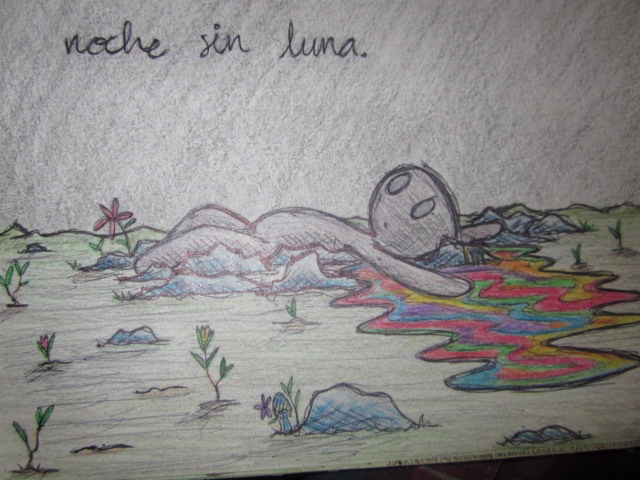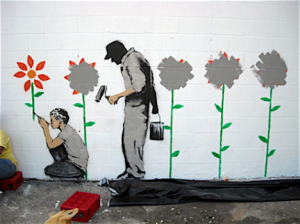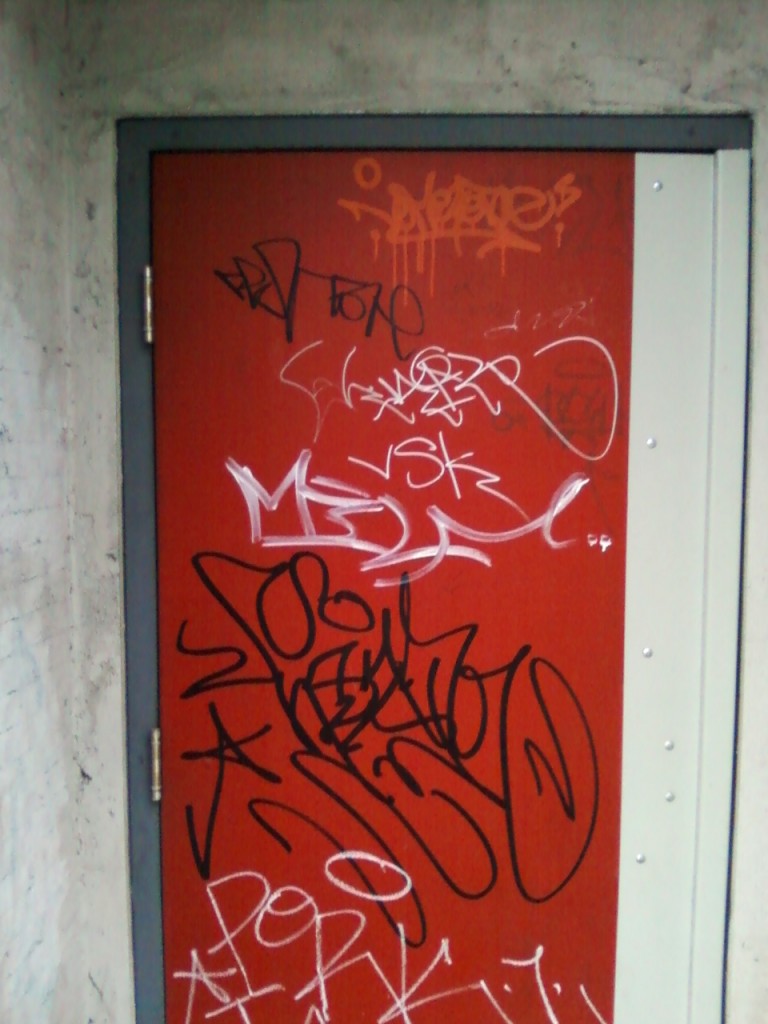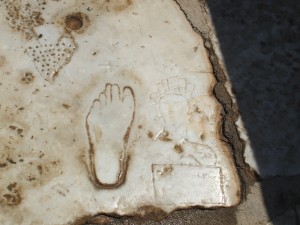For the majority, of us, graffiti is a ubiquitous and familiar aspect of everyday life. We see names, opinions, calling cards, and artwork scribbled on everything from dumpsters to brick facades to bathroom stalls. Though it is often all lumped together and thought of as the work of bored or rebellious youth, this is not the case; graffiti has a slew of functions, ranging from simple artistic value to gang tags to a mode of communication. The later is very interesting, as “messages written in graffiti are often made without the social constraints that might otherwise limit free expression of political or controversial thought” (Alonso, 1998: 2). Because of the anonymity it presents, graffiti allows for a more honest form of correspondence. As a communication tool, this cross cultural form of representation may serve as a voice to marginalized people, or those that do not agree with dominant ideas, opinions etc.
The artist responsible for the attached Bush the Butcher picture is using graffiti as a form of political communication, posing the general public as an audience to convey his or her less than favourable feelings towards the prior President of the United States. Graffiti may work to push underground political or radical groups, or the viewpoints of dissatisfied individuals. Political graffiti is not uncommon and because of the nature of graffiti as hard to regulate and limit, as well as expandable, flexible, and ever changing, it is a perfect medium through which to announce political views or commentary, be they positive or negative.
By Hannah Kuyek
Alonso, Alex 1998 Urban Graffiti on the Urban Landscape. Western Geography
Graduate Conference 1-25













